 | Ferdinand Rudolph Hassler - Arithmetic - 1826 - 232 pages
...given, to find the number of terms. When the first term is subtracted from the other term given, we have the product of the common difference into the number of terms less one as re J mainder; dividing this therefore by the common difference, we have the number of the term,... | |
 | Jeremiah Day - Algebra - 1827 - 352 pages
...^=a^- (n— l)Xd; that is, 425. In an arithmetical progression, the last term is equal to the first, + the product of the common difference into the number of terms less one. Any other term may be found in the same way. For the series may be made to stop at any term, and... | |
 | Jeremiah Day - Algebra - 1831 - 354 pages
...z=a.\-(n — l) xd; that is, 425. In an arithmetical progression, the last term is equal to thefirst,-\- the product of the common difference into the number of terms less one. Any other term may be found in the same way. For the series may be made to stop at any term, and... | |
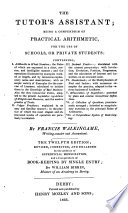 | Francis Walkingame - 1833 - 204 pages
...tujind the less extreme. , RULE. Divide the sum by the number of terms : from the quotient subtract half the product of the common difference into the number of terms less 1 ; and the remainder will be the less extreme. (10) A man is to receive £360. at 12 several payments,... | |
 | Mathematics - 1836 - 488 pages
...they form a descending series. In an arithmetical progression, the last term is equal to the first, + the product of the common difference into the number of terms less one. In an ascending series, the first term is the least, and the last the greatest. In a descending... | |
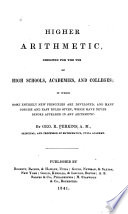 | George Roberts Perkins - Arithmetic - 1841 - 274 pages
...common difference into the number of terms, less one. Hence, the first term must equal the last term, diminished by the product of the common difference into the number of terms, less one. Therefore, when we have given the last term, the number of terms, and the common difference, to... | |
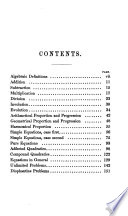 | William Watson (of Beverley.) - 1844 - 200 pages
...母 10 凡 THEOREM 3 43 The la8t term (/) of an increa8ing series is equal to the fir8t term, pita the product of the common difference into the number of terms less one; but minus that product when decre㏄ing; thus representing the number of terms of 口 + ゆ +... | |
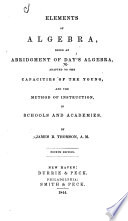 | James Bates Thomson - Algebra - 1844 - 272 pages
...z=a±(n — l)xd; that is, 330. (1.) To find the last term of an ascending series, Add to the first term the product of the common difference into the number of terms less one, and the sum will be the last term. (2.) To find the last term of a descending series. From the... | |
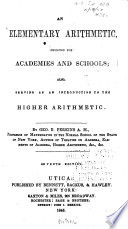 | George Roberts Perkins - Arithmetic - 1846 - 266 pages
...common difference into the number of terms, less one. Hience, the first term must equal the last term, diminished by the product of the common difference into the number of terms, less one. Therefore, when we have given the last term, the number of terms, and the common difference, to... | |
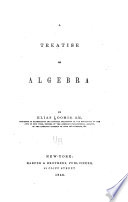 | Elias Loomis - Algebra - 1846 - 380 pages
...called the last term when the number of terms is n. Hence, The last term is equal to the first, ± the product of the common difference into the number of terms less one. In what follows we shall consider the progression an increasing one, since all the results which... | |
| |